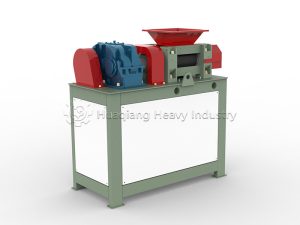In modern fertilizer production plants, rows of machinery operate in an orderly fashion. Among them, the double roller press granulator is quietly revolutionizing fertilizer production. This seemingly simple equipment contains astonishing technical wisdom.
The working principle of the double roller press granulator is both ingenious and efficient. It feeds moist powdered raw materials between two counter-rotating rollers, where the material is compressed into dense, uniform pellets under tremendous mechanical pressure. This physical forming process requires no drying stage, significantly reducing energy consumption. Meanwhile, other supporting equipment each play their roles: chain crusher preprocess raw materials to suitable particle sizes, mixers ensure uniform composition blending, rotary screener machine precisely separate qualified from unqualified products, and coating machines dress the pellets in protective layers.

These pellet fertilizers feature regular shapes and uniform sizes—not only aesthetically pleasing but also offering practical advantages. Their excellent flowability facilitates mechanical sowing; controllable dissolution rates precisely match crop needs; and even nutrient distribution avoids caking issues common in traditional fertilizers. For large farms, this standardized product greatly enhances fertilization efficiency while reducing resource waste.
From a broader perspective, this fertilizer production system is quietly driving agricultural sustainability. By precisely controlling fertilizer release rates, it reduces nutrient runoff into water bodies; by improving fertilizer utilization efficiency, it lowers the environmental footprint of agricultural production. Worldwide,more and more farms are benefiting from this technological innovation.
As the sun sets, those neatly arranged fertilizer pellets are not merely technological marvels, but bridges connecting modern agriculture with future hopes. They may be tiny, yet they carry the vital mission of nourishing our world while protecting our planet.


